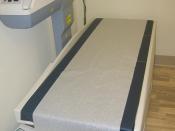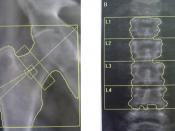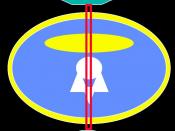What happens when calcium is not made a part of a regular diet throughout a human's lifetime? Osteoporosis is a disease that involves the loss of calcium from the bones. In order to understand this, an examination of what osteoporosis is, the diagnosis, and treatment/prevention of osteoporosis must be accomplished. Osteoporosis is a condition that causes bones to thin and weaken.
Osteoporosis is a condition that drains away one of the hardest and most durable substances in the body, the bone (FDA, 2001). This is accomplished by the loss of minerals from the bone, primarily calcium. This in turn causes the bones to become brittle and frail making them more susceptible to brakeage (AAOS, 2000). Osteoporosis comes from the Latin word meaning "porous bones" (FDA, 2001). "Bones consist of a matrix of fibres of the tough protein collagen, hardened with calcium, phosphorus and other minerals" (FDA, 2001). Two types of structural design that give bones their strength are the cortical bone and the trabecular bone (FDA, 2001).
These two structures interconnect to provide most of the strength to the bone (FDA, 2001). The skeleton and the teeth contain virtually 99 percent of the body's calcium supply (NICHHD, 2003). There are two types of cells that are involved in the maintenance of the bone. These include the osteoclasts, which are responsible for the break down of bone, and the osteoblasts, that are involved in the building of the bone (FDA, 2001). "A full cycle of bone remodelling takes about 2 to 3 months" (MFMER, 2003). As children, the body makes new bone faster than it breaks down the older bone, resulting in an increase of bone mass (MFMER, 2003). However, by the age of 30 the body's bone mass it at its peak (MFMER, 2003). Bone remodelling continues past 30, but...


